This spring, I picked up a 3000mAh Anker USB Power Bank for situations when I needed to recharge my phone while away from AC or car power.
A week or so later, I decided I should get something similar for my wife, and took the opportunity to try something different, the EasyAcc U-bright 300mAh USB power pank and flashlight. What persuaded me to get the EasyAcc wasn’t the flashlight, but that it claimed it could provide 2A of current through USB and charge at 1A, compared to 1A current and 1A charge.
When it arrived, I was happy with the quality of the product, and pleasantly surprised that the flashlight was bright enough to be useful for finding something in a dark car, etc. I didn’t have any way to confirm that it delivered on its specifications, other than timing charge times for my iPad 3.
Over the ensuing months I’ve picked up a few USB meters, and a USB breakout board that allow me to do more precise tests. I was impressed that the EasyAcc did indeed come close to its specs. When fully charged, it can deliver ~1.9A of current at ~4.8v, within the specs for USB) for a sustained period. It does as good a job of maintaining voltage with a ~2A drain as the Anker does with a ~1A drain, in fact, it does about as well with its single cell as some 4-5 cell power banks I have. When discharged fully, it recharges at ~1A.
These results intrigued me, and I wanted to find out what kind of Li-ion cell, and power electronics were inside, but I couldn’t find a good way to open the device without damaging the case.
Finally, yesterday, I decided to give it another try. It didn’t yield its secrets easily, but after a good deal of fuss, I managed to open the case without causing much cosmetic damage. Inside, I found…
A pink 18650 Li-ion cell, and a couple of PCBs.
With the backside of the case removed, I still can’t see any markings on the cell. Time to unscrew the PCBs and take things apart further.
So, that’s what it is, and LGABD11865. I can’t find a datasheet, but there are extensive tests of the LGABD11865 cell on lygte-info.dk. Compared to other cells of similar capacity, this cell seems to be an excellent choice for this application, maintaining a higher voltage than most competitors at the 3-4A required to get 2A @ 5v out of the boost converter.
The cell is soldered to one of the PCBs. On one side, there are the four LEDs to indicate the operational status of the device and charge level of the cell. There is also a momentary switch, to turn the USB output and the flashlight on and off, wires to the flashlight LED, and two identical 8-lead chips marked “8205.” I suspect these may be battery protection ICs.
At the center of the board, there is an 6-lead IC, labeled with a logo, and “301B, G60Z.” I haven’t been able to figure out what this chip is. Perhaps a voltage regulator for the MCU on the other side?
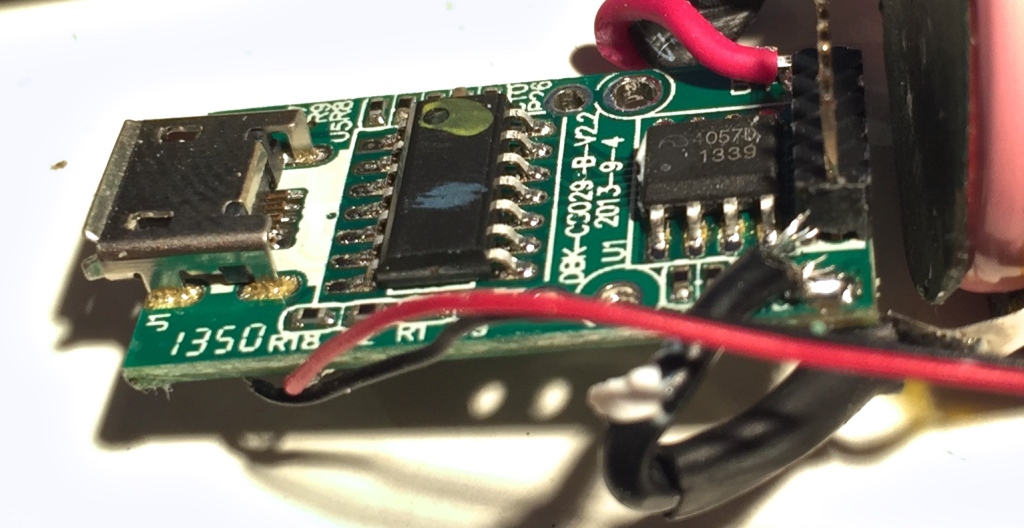
On the opposite side, there is the microusb connector for power input, a 14-pin IC with the markings sanded off. My guess is that this is a microcontroller. A second IC has 8 leads and is labeled with a logo, and “4057D, 1339.” After a lot of digging, I’ve figured out that this is a ME4057D lithium ion battery charging IC from Nanjing MicroOne Electronics. The ME4057 series is a linear charger and can charge at up to 1A, and the D version has a 4.35v charge termination voltage.
The board itself is labeled DBK-C0029-B-v2.2, 2013-9-4
The second PCB is stacked on top of a 6-pin header on the first PCB. It is notched to hold the USB host connector. On one side there is the the 6-pin socket that mates with the header on the other board, and a shielded inductor.
On the opposite side I probed around in some sloppily applied potting compound and found an IC in a square package. I couldn’t make out any markings, or even quite how it was attached to the board. My guess is that it is a boost-converter IC. Remaining under the potting compound is a large surface mount diode.


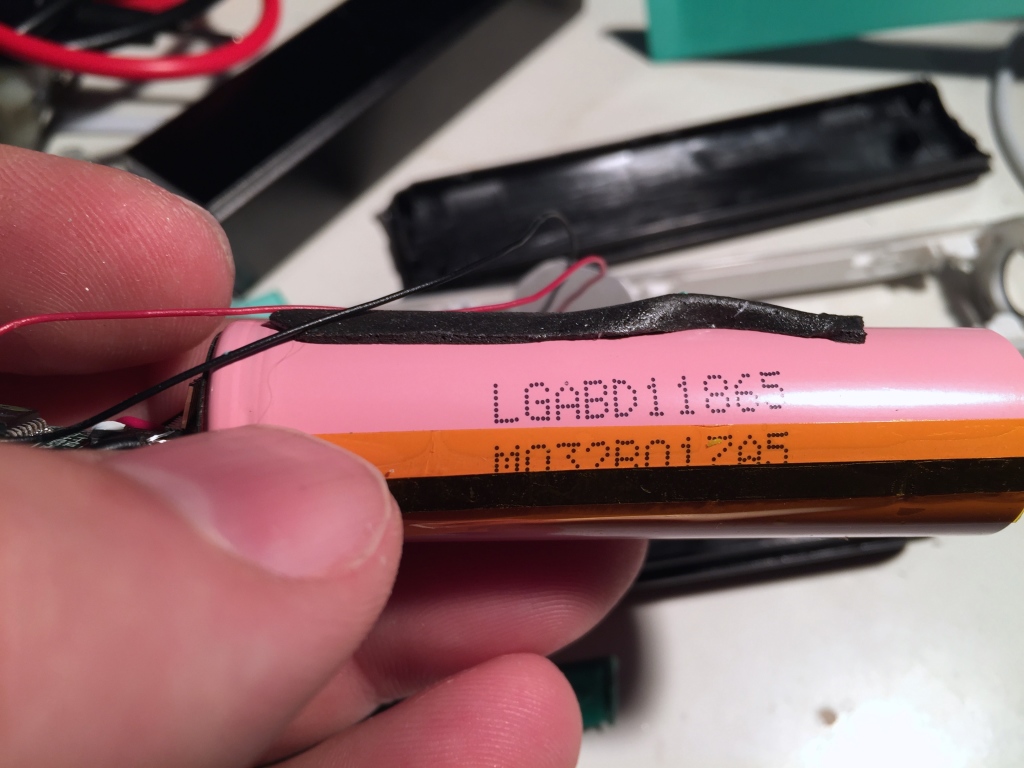
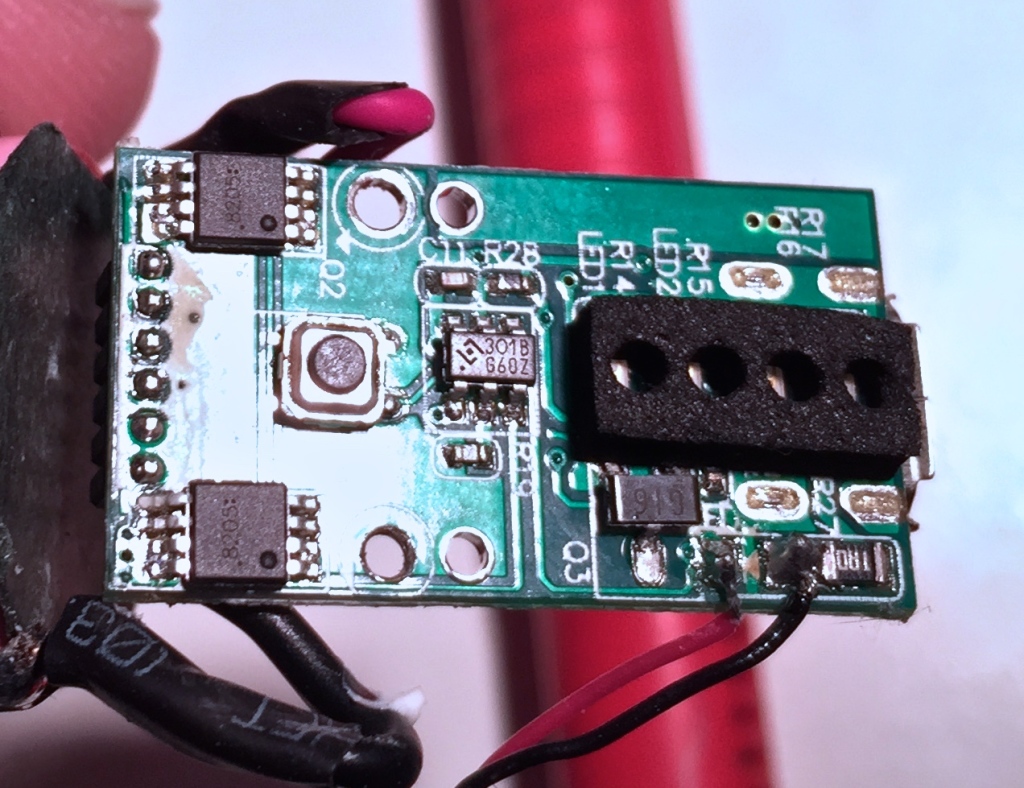
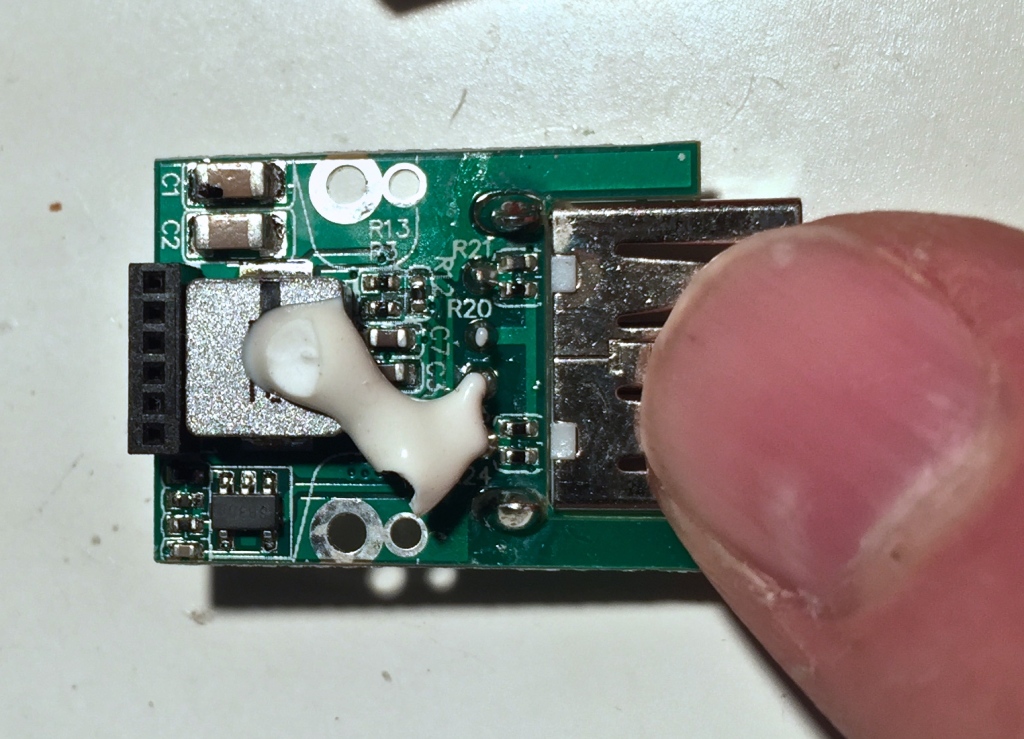
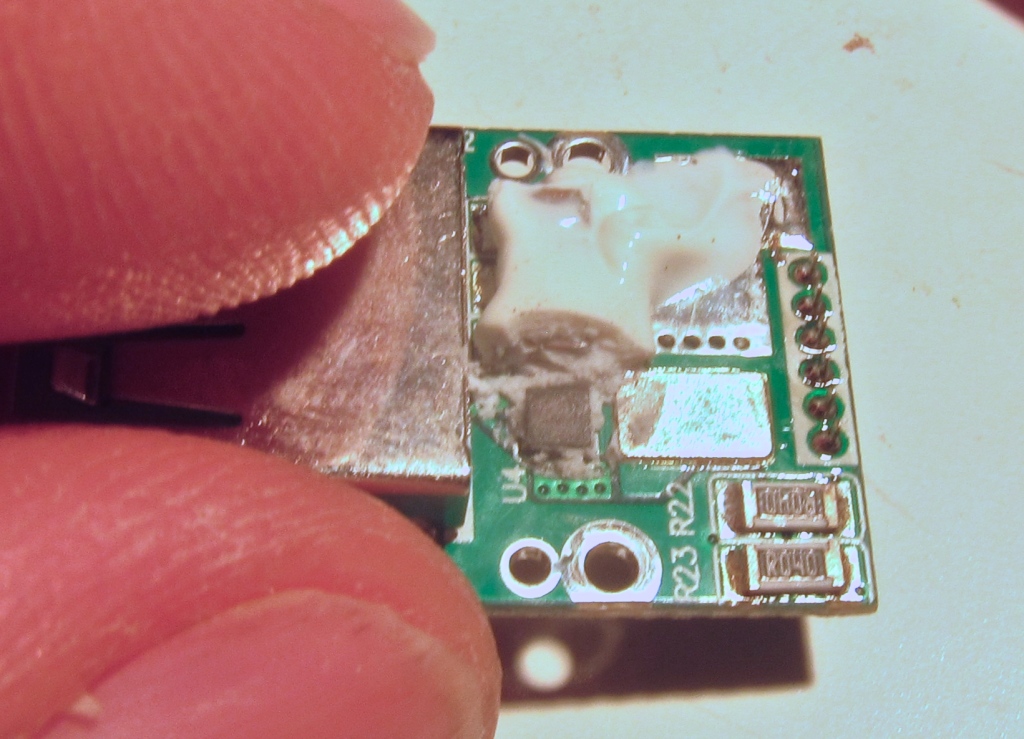
Hi, nice job.
Can you say more about the way you managed to open it ?
Mine has fallen and works bad 🙁
Thank a lot.